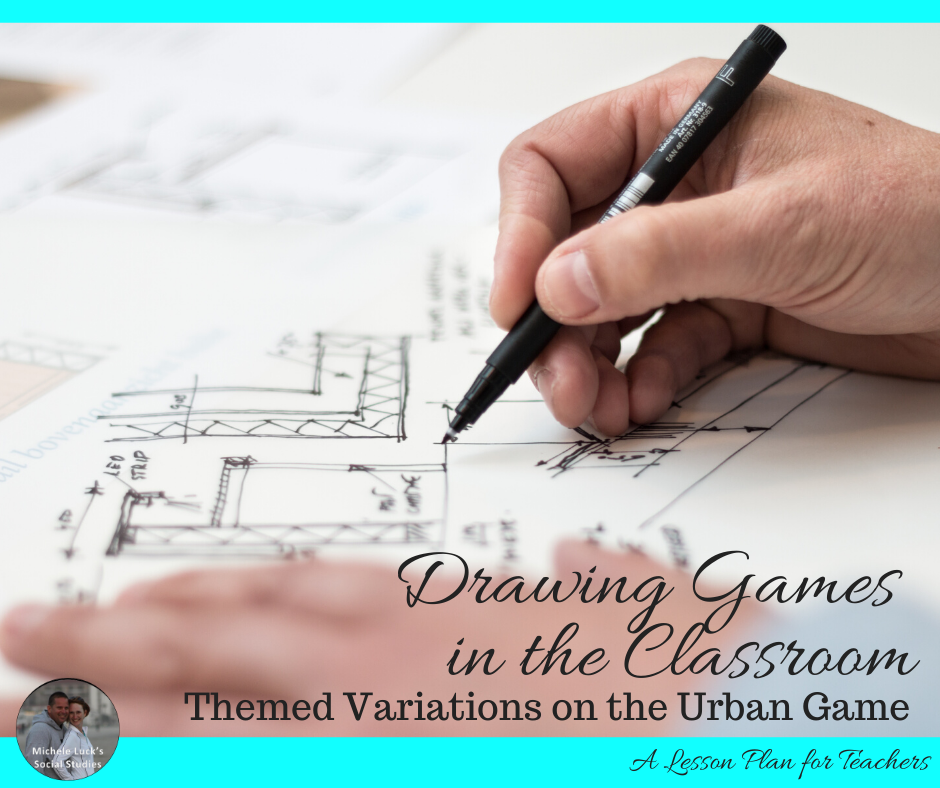You’ve likely heard of the Urban Game that is spreading like wildfire. An interesting exercise for secondary Social Studies classes, the teacher rapidly instructs students to modify a big paper drawing of an urban city. At the end of the exercise, students can make comparisons and draw parallels to the challenges faced by urbanization of their city.

The Urban Game is great in the classroom because it allows students to step outside the box and tap into their right brains for artistic skills and inspired creativity. Students have to turn on their listening ears, block out distractions, and work collaboratively to accomplish the assignment. In my previous post, Teamwork and Collaboration in the Classroom: An Exercise to Assess Direction Following, I introduced the American Revolution Drawing Game, a spin-off of the Urban Game meant to walk students through the booming revolution, one advancement (or setback) at a time.
But this drawing game has value outside your unit on the American Revolution, too. There are so many ways to modify the Drawing Game to study different time periods, units, and regional differences.
You can introduce your unit on Westward Expansion with the Westward Expansion Drawing Game. Covering the Transcontinental Railroad, immigration, Chinese Railroad Workers, the California Gold Rush, the Pony Express, the Oregon Trail, the Louisiana Purchase, and more, this Drawing Game can introduce students to the Expansion of America in a fun and engaging way.
Students can also dive into the American Civil War Drawing Game, where they’ll discover Slavery in the US, the Abolition Movement, the Missouri Compromise, Harriet Tubman & the Underground Railroad, Fort Sumter, the Battles of Big Run and Gettysburg, the Emancipation Proclamation, and more.
The Immigration into America: 1850 to 1910 Drawing Game covers the Gilded Age through the lenses of immigration, urbanization, overcrowding, factories and employment, Ellis Island, population differences, and more.

Each Drawing Game activity includes the teacher script, a sample image of a completed map, debriefing notes, and suggested follow-up questions and activities. By participating, students practice listening skills, mapping, designing a key, following directions, time-lining, critical thinking, and inquiry. If you choose to do the Drawing Games in small groups, students can also benefit greatly as they develop their communication and collaboration skills, fostering a solid classroom community.
 Drawing Games not only inspire your students and force them to look at the topic through a different lens, but they’re also fun and engaging! Since they’re so abstract, students may enjoy participating in the downtime before a break, or in a low-stress activity right after an extended holiday! These activities are great as introductions to a unit, or as reflection activities after you’ve already delved into study.
Drawing Games not only inspire your students and force them to look at the topic through a different lens, but they’re also fun and engaging! Since they’re so abstract, students may enjoy participating in the downtime before a break, or in a low-stress activity right after an extended holiday! These activities are great as introductions to a unit, or as reflection activities after you’ve already delved into study.
More Drawing Games are coming soon. What topic or theme would you like to see in a future Drawing Game?
Happy Teaching DRAWING!
